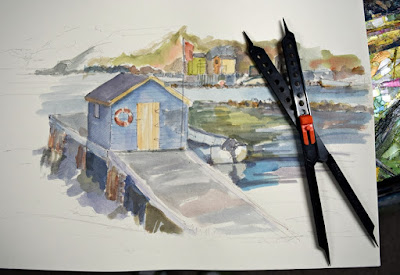This is a simple tool that provides accuracy for drawing and can be used to increase or decrease size. It can also be used as a check for measurement after freehand drawing if something doesn't look quite right.
Once the scale size is decided on, the central screw can be fixed in place. The closer to the smaller end of the divider that the screw is placed, the larger the proportion of the drawing will be and vice versa. This setting should not be changed during measurements for the drawing. The small ends of the divider are used to measure the height or width of the subject. The larger end is used against the drawing surface and small dots or lines are made to indicate the measurement. These measurements are made throughout the drawing, depending on the number of objects in the piece.
Of course, the usual plumb lines for proportion and measurement are needed to ensure objects align as required. Angles are usually determined by confirming an angle with a pencil then moving that same angle to the drawing. Where points intersect will be the measurement test and can be adjusted as needed.
If drawing from life, it is crucial that your view point never changes and that your arm is locked at the elbow for each measurement. If either of these change, the drawing will be not be accurate. If using a photograph or drawing from a computer or tablet screen, you can measure direct from the image, scaling up or down as required. Note if you use a computer screen: make sure that the photograph size is not enlarged or reduced if you draw over several sessions.







